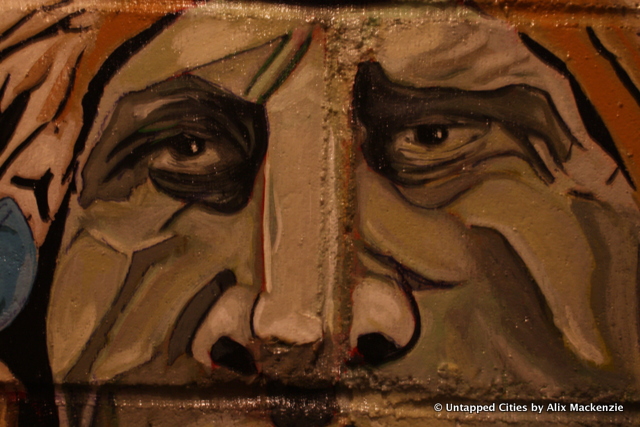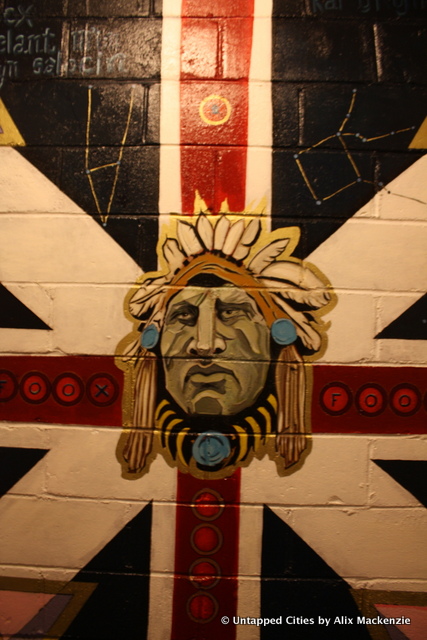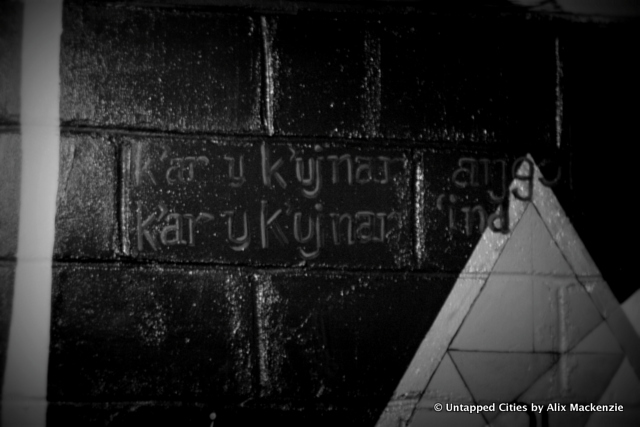When one spends a certain amount of time sitting in a hotel stairwell, you inevitably see an interesting selection of people moving between the floors. In a way there is a sense of mystery to it. However the fourth floor landing at Soho House now has a permanent tenant who presides and oversees the goings-on in the hidden world of the exclusive club and hotel. This “resident” is the full wall mural painted by David Foox. Commissioned for the space, Foox spent 9 days of working in the artificially lit stairwell to complete the piece. When asked how people will find the work, the artist responded cryptically that ‘it emanates an energy which draws people to it’, and that it certainly does.
Soho House was originally founded in London in 1995 to be a member’s only club for those in the film, media and creative industries. Thinking about the image surrounding the New York branch today, one no longer really associates the place with the arts (at least your average New Yorker wouldn’t). Although involved in the contemporary art scene, this original idea seems to have become lost amidst an air of celebrity and wealth. However the new and permanent resident on the fourth floor may bring Soho House a little closer to its roots.
The mural is riddled with symbolism and meaning which evokes this mystery of the stairwell in which it is placed. Nothing in the piece is included purely for aesthetic purpose. When you speak to Foox about the piece, you discover how inspired and well thought out the piece is. And when you take the time to sit a really take in the piece and the surroundings you really begin to experience it.
What struck me first (perhaps because I am British), was the inclusion of the Union Jack as the background, or at least the pre-1801 one. However perhaps the most dominant element of the mural is the Seneca Chief Head given pride of place at the center of the mural. The inclusion of the Chief has two meanings: Firstly it is a territorial spirit-located on Seneca Territory, the inclusion recalls the origins of the place where Soho House New York is located. Secondly, the tribe traded with the British, tying together the Union Jack and the chieftans head, ‘blending indigenous people with imperial roots’. This in turn encapsulates the concept of bringing Soho House from London to New York.
 Close Up of Venus surrounded by constellations
Close Up of Venus surrounded by constellations
The other dominant theme in the piece is the celestial imagery both visible in the constellations (including Foox’s own ‘celestial rabbit’), and the four large triangles in each corner containing the symbols of four planets. To add yet another layer of meaning, two phrases are written in ‘elvish’ at the top. Why choose a language created by Tolkien for a fictional country which no one on our earth speaks? Well the choice is simple-when confronted with messages, signs or phrases in foreign languages, people rarely take the time to actually translate what they see and discover the message the writer was attempting to convey. Only those who actually make the effort to look into and translate the words will actually discover something beautiful hidden beneath.
The symbolism he has chosen definitely anchors the work to the roots of the New York branch of the club, but perhaps the commissioning of this permanent piece also brings back the artistic roots of the club itself. His next commission for the club? Well it follows in the same theme of Native American and British relations, but as for how this will take shape, well you’ll just have to find out for yourself”¦.literally.









